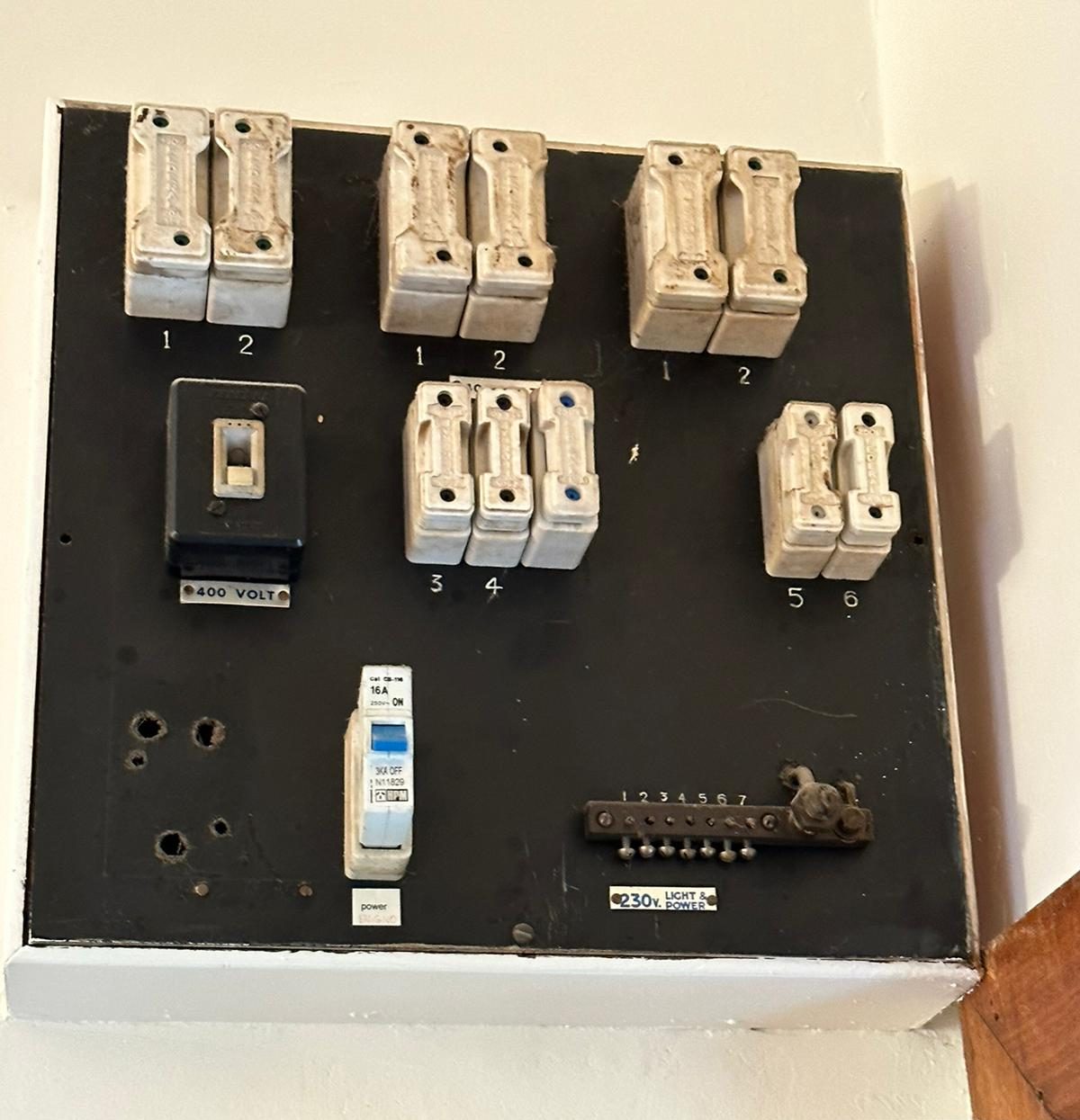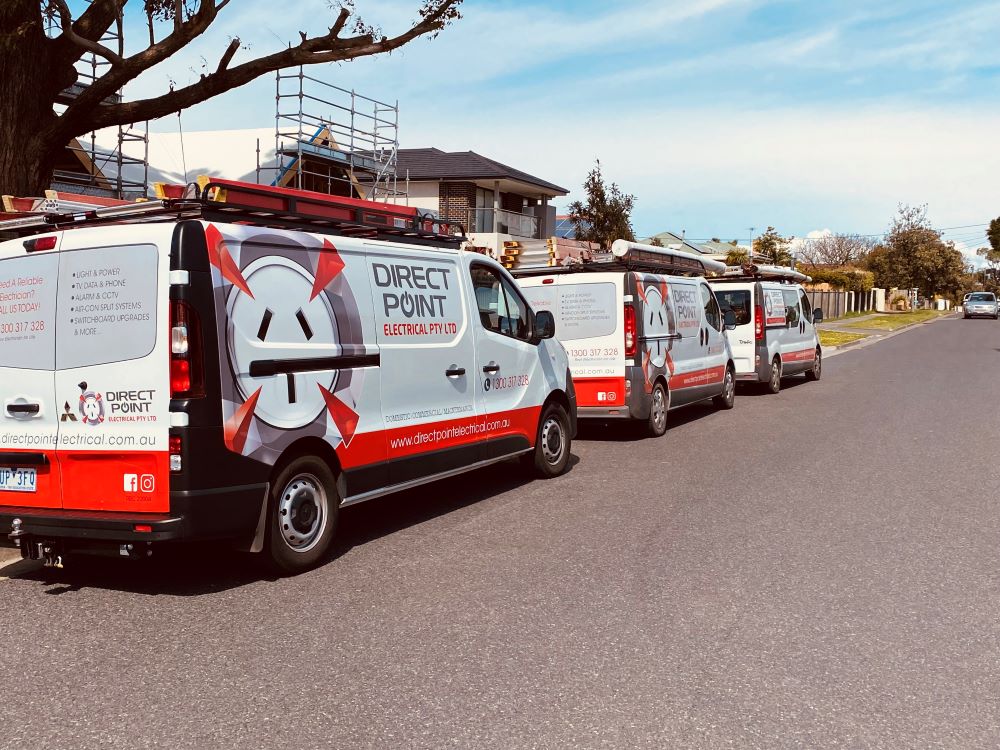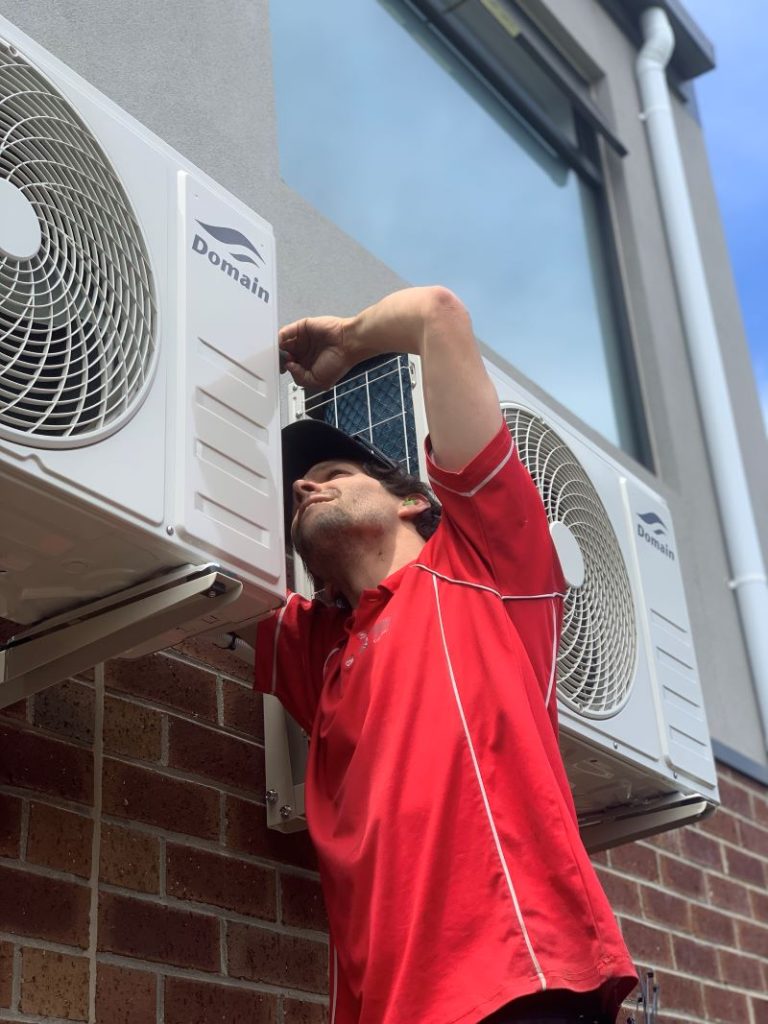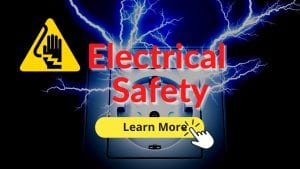Your cart is currently empty!
Category: Electrical Safety
-
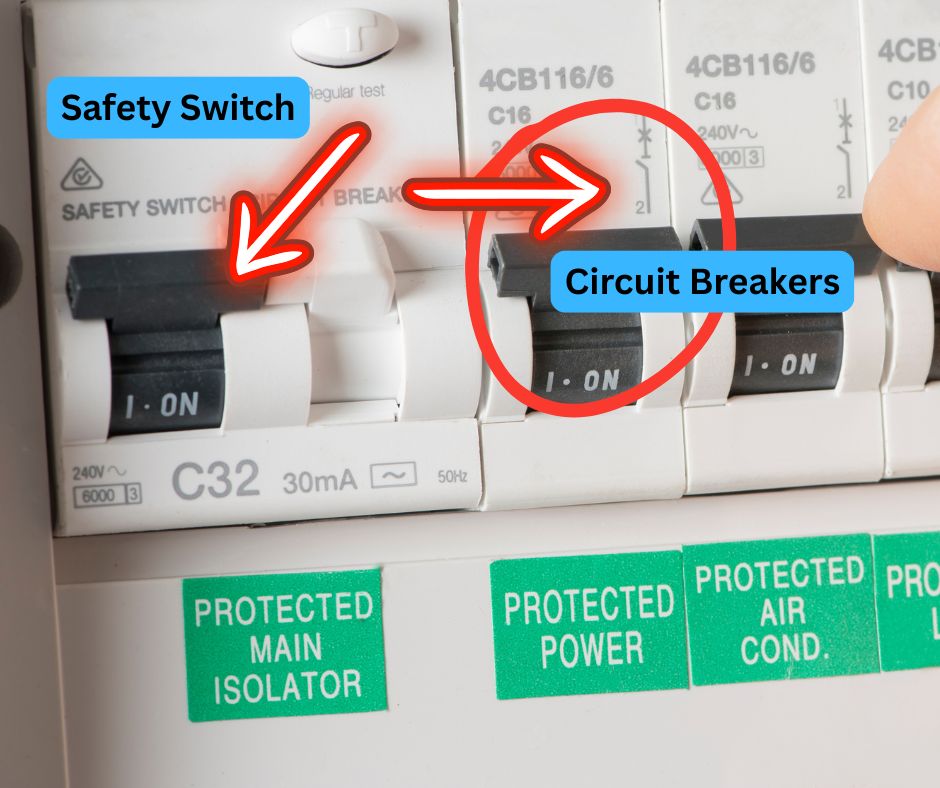
Safety Switches: Key Components for Your Switchboard
The Critical Importance of Safety Switches in Home Electrical Systems
Without safety switches, commonly referred to as RCDs or Residual Current Devices, your home remains vulnerable to dangerous situations, lacking a crucial automatic safety mechanism that protects against electric shock. In case of an electrical malfunction, the power may not shut off swiftly enough, significantly increasing the risk of severe injury or catastrophic fires. In Victoria, it has become a legal obligation to install safety switches on all final circuits in residential properties, enhancing safety and helping to prevent tragic accidents.

Understanding How Switchboards Function and the Vital Importance of Safety Switches
Safety switches play a pivotal role in your home’s electrical system. If your switchboard does not include these essential protective devices, you are jeopardizing your safety and that of your family. This issue is particularly concerning in older homes located in areas such as Footscray, Braybrook, and Yarraville, where many long-term residents have neglected to update their electrical systems for many years. Although older fuse boxes with ceramic fuses, cotton-wrapped wiring, or basic breakers might still operate, they fail to provide sufficient protection against electric shock or various electrical hazards that could endanger you and your loved ones.
It is crucial to comprehend the risks associated with outdated electrical systems to ensure the safety and security of your household.
1. Defining a Safety Switch and Its Operational Mechanism
A safety switch, often called a Residual Current Device (RCD), continuously tracks the flow of electricity in real-time. If it spots a current leak—such as from a damaged wire or a person coming into contact with electrical current—it will interrupt the power supply within milliseconds. This rapid response is what makes safety switches indispensable for preventing serious accidents. Unlike traditional fuses and breakers that trip due to overcurrent, safety switches activate specifically in response to hazardous situations, thereby ensuring your safety and well-being.
2. How to Quickly Identify Safety Switches in Your Home
To verify whether your switchboard is fitted with safety switches, you should open the panel and search for specific indicators, such as:
- Labels indicating “Safety Switch”
- Labels denoting “RCD”
- A TEST button present on the circuit breaker
If you cannot find a test button on any of your breakers, or if your switchboard still contains ceramic fuses, this indicates that you likely do not have RCD protection installed in your home. This critical information is further discussed in our comprehensive Switchboard Upgrade Services.
3. The Risks Associated with the Absence of Safety Switches
Increased Danger of Severe Electric Shock
If your home does not have a RCD, the risks increase dramatically. When a live wire touches an individual or a conductive surface, the electrical current remains active. This situation is extremely perilous, as neither the fuse nor the breaker will trip quickly enough to avert a serious electric shock, creating a life-threatening scenario.
Inadequate Protection Against Appliance Malfunctions
When devices such as a faulty toaster or washing machine begin leaking current, they can electrify nearby metal surfaces, leading to severe injuries. Thankfully, RCDs are engineered to instantly detect these dangerous faults, delivering vital protection that can potentially save lives.
Non-Compliance with Current Safety Regulations
All homes constructed or renovated after 1991 in Victoria are legally mandated to have safety switches installed on power circuits. As of 2007, this regulation has expanded to include lighting circuits as well. For complete guidelines, please refer to the documentation provided by Energy Safe Victoria.
4. Identifying Signs of an Outdated and Unsafe Switchboard
- Lack of “TEST” buttons on circuit breakers
- Presence of outdated ceramic fuses
- Power outlets emitting buzzing sounds or feeling warm to the touch
- Only a single circuit supplying power to the entire household
- Insufficient space to add more circuit breakers
- Frequent flickering lights or tripping circuits when using multiple appliances
If you observe any of these concerning indicators, we strongly encourage you to visit our switchboard service page. Our highly trained team can conduct a comprehensive inspection of your switchboard and provide you with a detailed quote on the spot.
5. Our Comprehensive Approach to Upgrading Your Switchboard
Throughout our thorough upgrade process, we will:
- Conduct a meticulous examination of your current switchboard and electrical circuits
- Remove any outdated ceramic fuses or circuit breakers
- Install cutting-edge RCBOs that integrate both circuit breaker and safety switch functionalities
- Clearly label every circuit to facilitate easy identification and access
- Issue a Certificate of Electrical Safety upon successful completion of the upgrade process
- Coordinate any required temporary power shutdowns to guarantee safety during the operation
Furthermore, we can strategically separate lighting and power across individual circuits, significantly enhancing both the safety and efficiency of your home’s electrical system.
6. Is a Complete Replacement of Your Switchboard Necessary?
In most instances, the answer is yes. Simply adding safety switches to an older switchboard might not be the safest or most efficient option. We often recommend a full switchboard replacement if:
- You are still utilizing rewireable fuses
- Visible signs of overheating or corrosion are evident
- You plan to add additional circuits or electrical appliances
- Your insurance provider stipulates a compliant switchboard for coverage
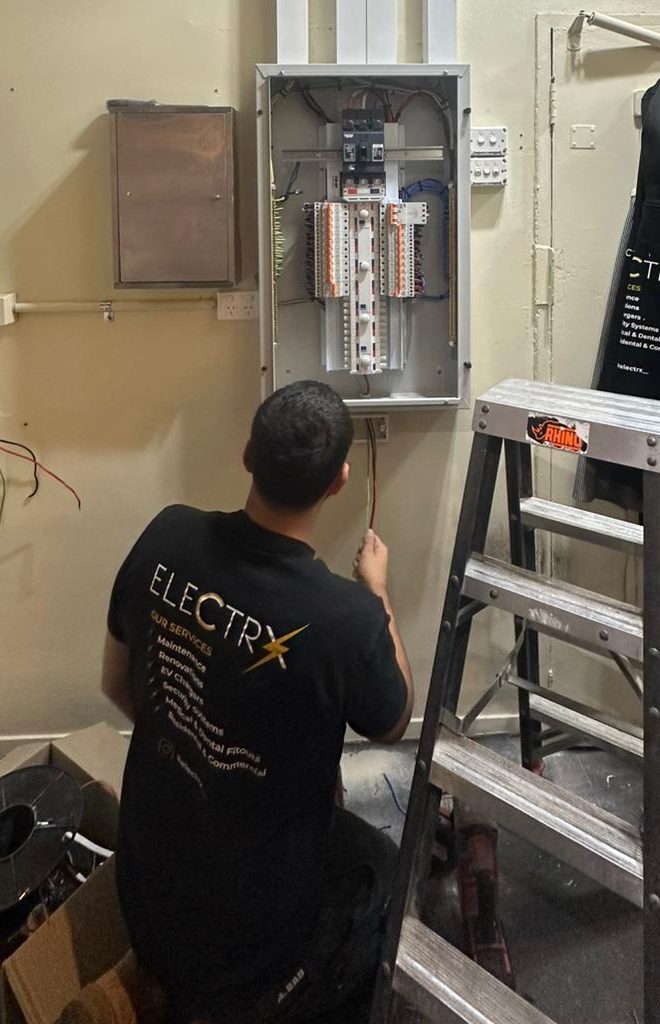
Frequently Asked Questions About Safety Switches
Are safety switches a legal requirement?
Yes, safety switches are legally mandated for all newly constructed homes and for major renovations. Older homes must have these devices installed whenever significant electrical work is performed.
How often should safety switches be tested to ensure they are functioning correctly?
It is recommended to test safety switches every three months. Simply press the TEST button to ensure that it trips as expected. If it fails to trip, this indicates a malfunction, and you should arrange for a replacement without delay.
Can I retain my old fuse box and only add one RCD?
While it is technically feasible to do this, it is seldom advised. Older fuse boards are not designed to handle the demands of modern electrical circuits effectively.
Will my electricity supply be temporarily interrupted during the upgrade?
Yes, there will be a temporary interruption in your power supply. However, we will make every effort to minimize downtime and will coordinate with your energy distributor to ensure a seamless transition.
Enhance Your Home’s Safety and Compliance with a Switchboard Upgrade
Running your home without safety switches exposes you to significant risks associated with electrical faults. A single electrical malfunction could lead to severe electric shock, fire hazards, or even catastrophic consequences.
Our expertise lies in swiftly and efficiently upgrading your switchboard, ensuring it adheres to all safety standards with full certification, so your home is in compliance with modern safety regulations rather than outdated practices.
Discover more about our Switchboard Upgrade Services in Melbourne for additional details.
No Safety Switches on Your Switchboard? Here’s Why That’s Not Safe
The Article: Safety Switches on Your Switchboard: Why They’re Essential first appeared on https://writebuff.com
The Article Essential Safety Switches for Your Switchboard Was Found On https://limitsofstrategy.com
-
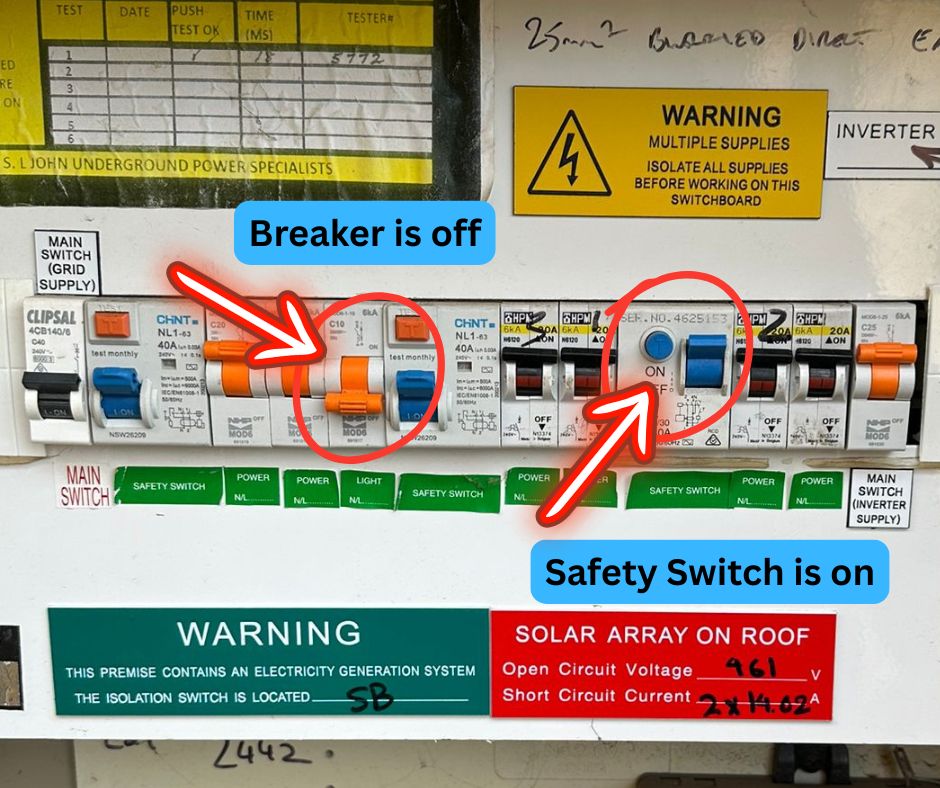
Understanding Circuit Breaker Tripping: Key Insights You Need
Discover the Primary Reasons Behind Frequent Circuit Breaker Trips in Your Home
When a circuit breaker frequently trips, it serves an essential safety function by protecting your residence from potentially dangerous electrical faults. This recurring problem can stem from various common factors, including overloaded circuits, short circuits, malfunctioning appliances, or undetected wiring issues. If you observe that the breaker is tripping consistently, it is vital to uncover the root cause and seek the expertise of a licensed electrician. This step is crucial to ensuring that your home’s safety and functionality are promptly restored.

Step-by-Step Guide to Diagnosing the Causes of Circuit Breaker Tripping
If your circuit breaker powers off immediately upon being reset, it indicates that there is a significant issue within your electrical system. The breaker is functioning as designed by shutting off the electrical supply to avert potential dangers or more serious problems from developing. Addressing these issues swiftly can help maintain the integrity and safety of your electrical system, preventing future complications.
Homeowners in Werribee, Altona, and Point Cook often reach out to us with concerns about this frustrating issue. While it may be inconvenient, frequent tripping is often a precursor to more serious electrical problems that could pose safety risks if not addressed immediately.
This article will delve into the various underlying causes of circuit breaker malfunctions, provide actionable troubleshooting steps you can try at home, and outline how Electrx can effectively resolve these electrical challenges for you.
Understanding the Mechanisms of Circuit Breakers for Home Safety
Circuit breakers are designed as automatic safety devices that protect your home by interrupting the electrical current under specific dangerous conditions. These conditions include:
- Instances of excessive current flowing through a circuit, leading to overload situations.
- Short circuits that can result in hazardous electrical faults, posing risks to safety.
- Power leakage to the ground, which indicates an earth fault that needs urgent attention.
- Faulty breakers themselves or those nearing the end of their operational lifespan.
Unlike traditional fuses, which rely on melting wires to stop current flow, circuit breakers react much more quickly to potential dangers. This rapid response offers a superior safety mechanism, ensuring a safer environment for you and your loved ones.
Identifying the Reasons Why Your Circuit Breaker Fails to Stay Reset
If you find yourself resetting the breaker only to have it trip again almost immediately, this indicates an active fault present on that particular circuit. Understanding common causes can significantly aid in diagnosing the issue effectively.
The primary problems that often lead to such scenarios include:
Recognizing Overloaded Circuits as a Common Electrical Issue
Overloaded circuits are a prevalent electrical concern, especially when multiple high-demand devices, such as kettles, toasters, or heaters, are used simultaneously on the same circuit. This combined electrical load can easily surpass safe limits, causing the circuit breaker to trip as a protective measure against overheating and potential fire hazards, which could pose a serious threat to your home and safety.
Evaluating the Impact of Faulty Appliances on Circuit Breaker Functionality
In some cases, the source of the problem may originate from the devices connected to the circuit rather than the wiring itself. Appliances like heaters, older refrigerators, and dryers can often be the culprits; internal faults within these devices may lead to short circuits or current leakage, resulting in the circuit breaker tripping unexpectedly.
Understanding the Dangers of Short Circuits and Their Causes
Short circuits occur when damaged wiring, rodent infestations, or crushed insulation allow live wires to directly contact the earth or neutral wires. This dangerous condition can cause the circuit breaker to trip quickly to prevent hazardous outcomes, which could threaten your property and personal safety.
The Significance of Recognizing Earth Leakage and Its Implications
Moisture intrusion in outdoor outlets, garden lighting setups, or cabling beneath your home can create conditions that lead to current leakage into the ground. This situation can trigger Residual Current Devices (RCDs) to trip as a precaution, ensuring the safety of your electrical system and preventing potentially dangerous situations from arising.
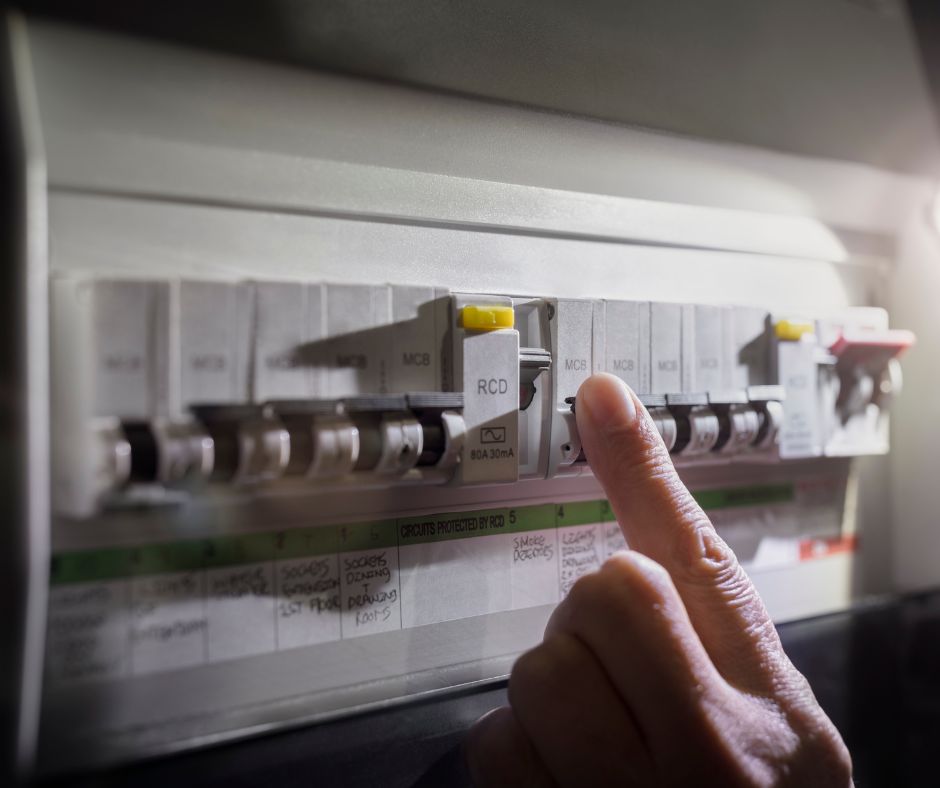
Essential Steps to Take When Your Circuit Breaker Trips
- Unplug all devices connected to the outlets on the affected circuit to eliminate any potential overload sources.
- Reset the circuit breaker by flipping it back to the ‘on’ position.
- If the breaker remains active, start plugging your devices back in one at a time to identify the source of the issue.
- When the breaker trips again, you will have successfully pinpointed the faulty device that requires further inspection or replacement.
- If the circuit breaker continues to trip even when no devices are connected, it’s time to contact our team for professional assistance.
Take advantage of our Fault Finding Service to receive a comprehensive and prompt diagnosis of your electrical issues, ensuring your safety and peace of mind.
Recognizing When It’s Time to Stop Resetting Your Circuit Breaker
If your circuit breaker frequently trips or fails to reset at all, it is crucial to observe the following precautions:
- Do not keep resetting the breaker—this practice can place excessive stress on your entire electrical system, leading to more severe complications.
- Avoid swapping breakers between different circuits, as this can create additional issues.
- Do not attempt to replace the breaker yourself—this is not only illegal but also poses significant safety risks for you and your home.
We have witnessed countless instances where DIY resets have led to damaged boards or even house fires. Trust our experienced professionals to safely and effectively trace the underlying issue and provide a reliable solution.
What to Expect When Electrx Resolves Your Circuit Breaker Issues
When our dedicated team at Electrx responds to a reported circuit breaker fault, we carry out a thorough assessment that includes:
- Testing the circuit with specialized clamp meters and insulation testers to ensure both safety and reliability.
- Inspecting all outlets, fittings, and switchboard connections for any signs of irregularities or wear.
- Examining appliances that may be contributing to the fault for potential internal issues.
- Replacing the circuit breaker or RCD if we determine that it has failed during our assessment.
- Repairing any damaged cabling or terminals that pose a safety risk to your electrical system.
- Issuing a Certificate of Electrical Safety upon the successful completion of our work, ensuring compliance with safety standards.
If your switchboard is outdated or lacks sufficient safety switches, we may also recommend a Switchboard Upgrade to improve safety standards and effectively protect your home.
Understanding the Lifespan of Circuit Breakers and Recognizing Signs of Failure
Indeed, circuit breakers, like any mechanical device, have a limited lifespan. If your breaker is tripping excessively or does not reset smoothly, it may indicate a fault that requires immediate professional attention.
Signs that your circuit breaker may be nearing failure include:
- Feeling hot or loose to the touch, which indicates potential overheating.
- Tripping without any obvious cause, suggesting underlying issues that need to be addressed.
- Requiring considerable effort to reset, a clear indication of malfunction.
- Flipping even when no load is connected, pointing to potential internal faults.
We maintain a range of modern, compliant replacements readily available and are prepared to promptly replace faulty breakers to ensure the safety and reliability of your electrical system.

Your Questions Addressed: Circuit Breaker Frequently Asked Questions
Is it legal for me to replace my circuit breaker myself?
No, according to Victorian law, only a licensed electrician is authorized to safely and legally replace circuit breakers in residential settings.
Why does my circuit breaker trip when I turn on the heater?
Heaters typically draw a substantial amount of current. If they share a circuit with other high-power devices, this can create an overload situation, causing the breaker to trip as a safety precaution.
Can a faulty outlet lead to my circuit breaker tripping?
Yes, damaged or melted outlets can short internally, causing the breaker to trip every time the circuit is energized, which can result in hazardous conditions.
Is this a situation that demands immediate attention?
Absolutely, especially if the breaker fails to reset, affects critical appliances, or shows signs of burning or overheating, which could pose serious risks to your safety and property.
Final Thoughts on Circuit Breaker Issues and Effective Solutions
When circuit breakers trip, understanding the reasons behind this action is crucial. If your breaker fails to stay reset, it’s essential not to overlook this warning, as the underlying issue could stem from your wiring, appliances, or the switchboard. Electrx is equipped with the expertise to swiftly identify and resolve these concerns.
We will manage all necessary repairs to ensure your system operates safely and reliably, maintaining its consistent performance for your peace of mind.Contact us for expert assistance with Melbourne Switchboards and all your electrical needs.
Circuit Breaker Keeps Tripping or Won’t Stay Up? Here’s What It Means
The Article: Circuit Breaker Tripping? Discover What It Means first appeared on https://writebuff.com
The Article Circuit Breaker Tripping Explained: What You Need to Know Was Found On https://limitsofstrategy.com
-

Electrical Safety Inspections: A Must-Read for Melbourne Homeowners
Understanding the Importance of Comprehensive Electrical Safety Inspections in Your Home
An electrical safety inspection is an essential and meticulous evaluation of your home’s wiring, switchboard, outlets, and safety devices. This critical assessment ensures adherence to the Australian Standard AS/NZS 3000 and uncovers potential hazards, such as overloaded circuits, faulty wiring, or absent safety switches. Conducted by certified electricians, these inspections are vital for preventing severe risks like electric shock, devastating fires, and damage to your valuable household appliances, ensuring peace of mind for you and your family.

Essential Electrical Safety Inspections That Every Homeowner Must Prioritize
Many homeowners often operate under the false assumption that their home’s electrical system is in optimal condition until a significant problem emerges. However, how can you be sure that your wiring remains intact and that no degradation is occurring behind the walls? Are you confident that your switchboard is functioning correctly and not at risk of overheating? Regular electrical safety inspections are not merely precautionary; they are crucial, especially in older neighborhoods like Narre Warren and Rowville. Given that many homes in these areas are over 40 years old, the original switchboards may often be outdated and require upgrading. Whether you are buying, selling, renovating, or simply have not had an inspection in years, it is vital to understand the workings of these inspections and their significance in maintaining your home’s safety.
Comprehensive Overview of What an Electrical Safety Inspection Involves
An electrical safety inspection encompasses a meticulous review of your property’s entire electrical infrastructure. A licensed electrician will thoroughly evaluate the condition, compliance, and functionality of:
- Wiring and cable insulation
- Power outlets and light switches
- Switchboard and circuit breakers
- Residual Current Devices (RCDs) or safety switches
- Earthing and bonding systems
- Appliance connections and load capacity
- Smoke alarm wiring (if hardwired)
- External weatherproofing of outdoor circuits
At Direct Point Electrical, we meticulously adhere to all relevant legislation and guidelines, including the AS/NZS 3000:2018 Wiring Rules, Energy Safe Victoria guidelines, and Victorian Rental Tenancy Regulations, ensuring that your home remains safe and compliant.
The Importance of Electrical Inspections for Older Homes
Homes constructed before 1990 often employed outdated wiring practices, including rubber-insulated or aluminium cabling, which can deteriorate over time, particularly in areas exposed to heat or moisture. If your residence has not undergone rewiring or a safety inspection in over 20 years, scheduling a thorough safety inspection is absolutely essential. We frequently encounter serious issues, such as:
- Non-earthed outlets
- Oversized fuses
- Lack of smoke alarms
- Circuits without RCDs
- Undersized cabling for modern electrical loads
These problems pose significant hazards that endanger both your property and personal safety, underscoring the necessity of timely inspections.
Optimal Timing for Scheduling Your Electrical Inspection
- Before purchasing or selling a property: This step is often mandated by lenders and is a recommended practice for buyer diligence.
- Prior to renovations or major appliance upgrades: Ensuring electrical safety before making modifications is critical to prevent future issues.
- After experiencing flood, storm, or fire damage: Prompt inspections are necessary to uncover any new hazards that may have arisen.
- If your home is over 25 years old: Regular checks are essential for older properties to maintain safety standards.
- As a landlord, during the preparation of a rental property: Compliance and safety checks are paramount to ensure tenant safety.
Since March 2021, landlords in Victoria are mandated to conduct electrical safety checks every 2 years, in adherence to the Residential Tenancies Regulations 2021.
For additional information, please visit: Victorian Government Consumer Affairs.
Detailed Explanation of the Electrical Safety Inspection Process
Our licensed electricians perform a thorough walkthrough and evaluation of all accessible electrical systems, which includes:
- Testing every socket and switch for faults
- Checking polarity and voltage across all points
- Verifying the presence and effectiveness of RCDs
- Inspecting the switchboard layout, protection, and labeling
- Utilizing thermal imaging to detect overheating components (when necessary)
- Conducting earth loop impedance testing
- Documenting any illegal or DIY wiring
Upon completion of the inspection, you will receive a comprehensive written report detailing:
- Existing hazards
- Compliance status
- Urgent repair needs (if applicable)
- Recommended upgrades
- Options for enhancing safety
Moreover, we provide a Certificate of Electrical Safety (COES) for any rectification work completed during the inspection, ensuring that you have peace of mind regarding your home’s electrical safety.
Steps to Take If Your Home Fails the Inspection
There is no need to panic. Many homes we inspect only require minor improvements, such as adding an RCD, replacing a few worn outlets, or addressing an overloaded circuit. If we discover major issues (such as non-earthed wiring or an outdated switchboard), we will prioritize the safety risks and provide you with a transparent, fixed quote for the necessary repairs. For additional information on how we manage updates, please visit our electrical services page.
What to Expect Regarding the Duration of an Electrical Safety Inspection
The typical duration of most inspections ranges from 1.5 to 2.5 hours, contingent upon the size and accessibility of the property. If you reside in a double-storey or split-level home or have extensive outdoor power systems, the duration may vary slightly to ensure a meticulous assessment is conducted.
Financial Benefits of Scheduling Your Electrical Safety Inspection
Indeed, neglecting to recognize issues such as leaking current, loose neutral connections, or improperly loaded circuits can lead to significant consequences, including:
- Increased power bills
- Reduced lifespan of your appliances
- Heightened risk of costly repairs if problems remain unnoticed
Additionally, identifying faults early shields you from potential financial burdens and legal repercussions associated with an electrical fire or injury claims, especially if you are a landlord who has tenants relying on your property’s safety.
Frequently Asked Questions About Electrical Safety Inspections
What distinguishes a safety inspection from an energy audit?
A safety inspection primarily focuses on identifying hazards and ensuring compliance with safety codes, whereas an energy audit evaluates efficiency and provides recommendations for reducing energy consumption.
Should I turn off the power during the inspection?
It is not always necessary to turn off the power. While some tests may require brief disconnections, most of the inspection can be performed with the power on, ensuring minimal disruption.
Am I liable for fines if I neglect safety checks?
If you are a landlord, the answer is affirmative. Under the Residential Tenancies Act, failing to complete bi-annual safety checks can result in fines or complications with rental listings, which can be significantly detrimental.
Is a safety inspection necessary if I have solar panels?
Yes, a safety inspection is imperative. Solar systems incorporate additional components that require testing, including isolators, inverters, and export limits, all of which must adhere to established safety standards to ensure safe operation.
Can DIY electrical work adversely affect my inspection?
It certainly can. Any non-compliant or unlicensed modifications must be rectified before we can issue a safety clearance, making professional oversight essential for maintaining safety standards.
Your Trusted Local Electrician for Dependable Electrical Safety Inspections
Investing in electrical safety inspections is among the most critical and cost-effective protective measures you can take for your home. These inspections play a key role in preventing tragic incidents, and if your home is older, has undergone recent renovations, or hasn’t been professionally checked in years, now is the time to take proactive measures to ensure safety.
Contact Direct Point Electrical today to schedule your professional inspection and guarantee your home’s electrical safety.
Reliable Local Electricians You Can Trust
Electrical Safety Inspections Explained: What Melbourne Homeowners Must Know
The Article: Electrical Safety Inspections: Essential Guide for Melbourne Homeowners first appeared on https://writebuff.com
The Article Essential Guide to Electrical Safety Inspections for Melbourne Homeowners Was Found On https://limitsofstrategy.com
-

Essential Electrical Tips for Travelers in Belize Outlets
Arriving in Belize only to find that your electronics won’t charge can lead to significant frustration. Thankfully, most outlets in Belize operate on the same 110-volt standard as those in the United States, which typically means you can avoid major issues with adapters. Nevertheless, it’s always prudent to bring along a universal travel adapter to accommodate occasional variations in socket designs. While the majority of your electronic devices will function seamlessly, it’s wise to confirm the voltage requirements for your specific gadgets before your trip. Furthermore, utilizing surge protectors is highly advisable to safeguard your valuable electronics from any unexpected electrical inconsistencies during your exciting Belizean adventure.

Master the Essentials of Voltage and Plug Types in Belize for Effortless Travel
Acquiring a thorough understanding of the electrical system in Belize is crucial for ensuring the safe and effective operation of your devices. By preparing in advance with the appropriate adapters and knowledge of the local electrical infrastructure, you can circumvent potential electrical mishaps during your exciting journey to this stunning country. Proper preparation allows you to enjoy uninterrupted access to your devices, ensuring you can capture every memorable moment of your adventure without unnecessary stress.
Explore the Standard Voltage and Its Impact on Travelers to Belize
Belize utilizes a standard voltage range of 110-120 volts, mirroring the voltage used in the United States. This compatibility means that the majority of your electronic devices from the US can function directly without the need for a voltage converter, greatly simplifying your travel preparations. However, it remains essential to double-check the voltage requirements for each of your devices, particularly if you are bringing along any specialized or high-tech equipment that may have different power needs.
A Comprehensive Overview of Plug Types Commonly Used in Belize
In terms of electrical compatibility, Belize employs the same electrical plug types as the United States. Below is a detailed breakdown of the plug types you can expect to encounter:
Plug Type Description Type A Two flat parallel prongs Type B Two flat parallel prongs with a grounding pin Voltage 110-120V Frequency 60 Hz - Ensure you pack standard US plugs for your devices to facilitate easy connections
- Consider bringing adapters for any specialized devices that may not fit standard configurations
- Always confirm your device’s compatibility before embarking on your journey
- Verify the voltage requirements for any sensitive electronics to prevent potential damage
- Understanding your electrical needs is crucial to avoid possible damage to your devices.
With proper preparation, you can guarantee smooth electrical connectivity throughout your Belizean adventure. Familiarizing yourself with the plug types and voltage will keep your devices powered and connected during your travels.
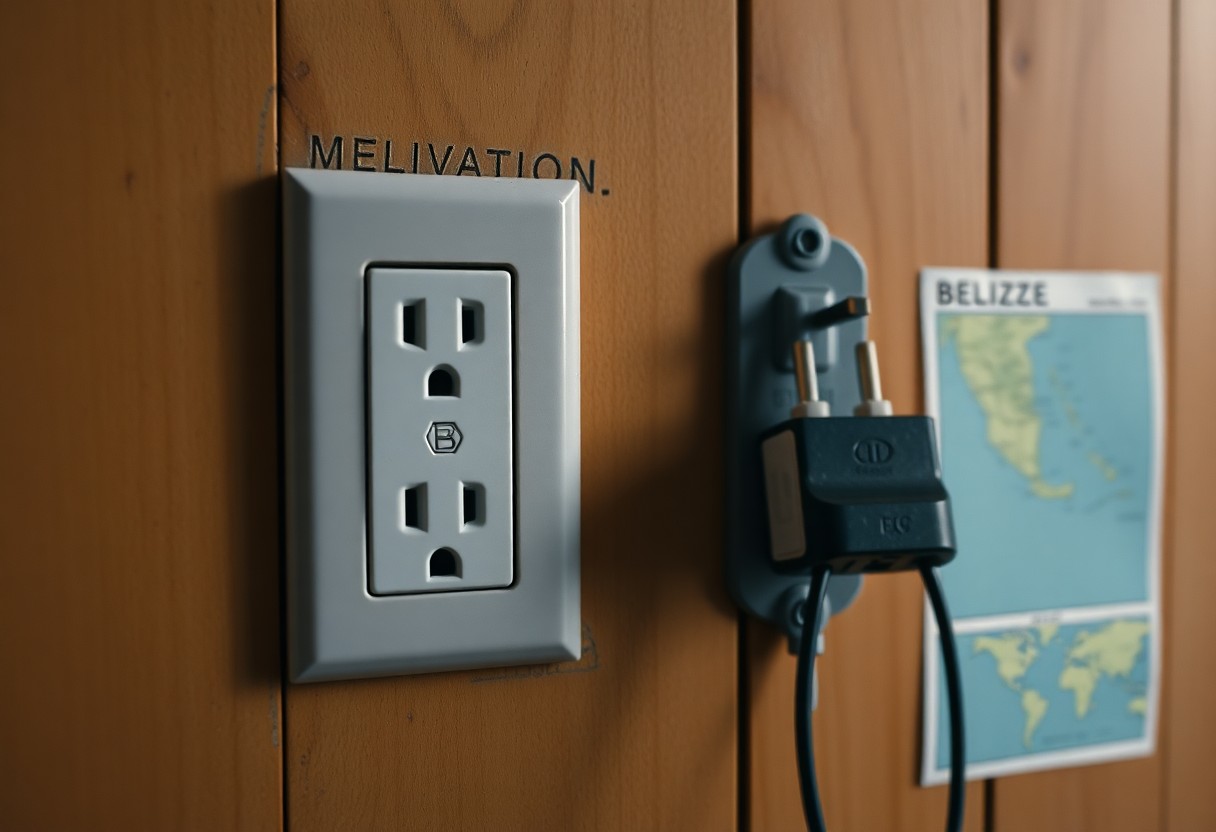
Understanding the Key Difference Between Adapters and Converters for Your Belize Trip
When traveling to Belize, it is vital to grasp the significant difference between adapters and converters to effectively protect your valuable electronic devices. An adapter facilitates the connection of your device into an outlet with a different shape, while a converter transforms the electrical voltage to match your device’s requirements. Your decision on which to use will depend on your specific device’s power needs and the electrical standards present in Belize. Many modern electronics are designed to be dual-voltage, yet some older or specialized devices may necessitate additional voltage transformation to prevent potential damage during use.
Recognizing When to Use an Adapter for Your Electronic Devices
For most electronic devices such as smartphones, laptops, and camera chargers, using an adapter is typically sufficient. Modern electronics with USB charging capabilities are often equipped with built-in voltage compatibility, making a simple plug adapter the most practical solution. Ensure that the adapter you select corresponds with the electrical outlet configuration in Belize, which closely aligns with US standards, thus allowing for straightforward and hassle-free connections.
Determining the Necessity of a Voltage Converter
The need for a converter becomes apparent with older or specialized electrical devices that aren’t designed to handle variable voltage standards. Equipment such as hair dryers, straighteners, and certain kitchen appliances may require a voltage converter to avert electrical malfunctions or potential destruction when used in Belize. It’s essential to note that not all devices necessitate the same level of voltage transformation; high-wattage appliances are generally more likely to require a full voltage converter, while low-power electronics might operate adequately with just an adapter. Always verify your device’s specifications and power needs before your trip to ensure complete electrical compatibility with Belize’s electrical infrastructure.
Vital Tips for Travelers to Belize Regarding Their Electronics
Being thoroughly prepared is of utmost importance when you travel to Belize. You’ll want to ensure that you pack the appropriate adapters and possess a strong understanding of the local electrical system to keep your devices functioning smoothly. Consider investing in a universal travel adapter that supports various plug types and voltage ranges. This proactive preparation can save you from frustration and unexpected electrical challenges during your trip.
Verifying Device Compatibility with Belize’s Electrical System
Electrical standards can vary significantly across different countries, making it imperative to verify that your electronic devices are compatible with Belize’s electrical system, which typically operates at 110V and utilizes standard US-style plugs. Always check your device’s voltage specifications before your trip, and consider bringing a voltage converter if necessary to prevent any potential damage to your valuable electronics.
Effective Strategies for Avoiding Power Surges While Traveling
When it comes to protecting your electronics from power surges, consider implementing these effective strategies:
- Utilize a surge protector that is compatible with international voltage
- Unplug devices during electrical storms to mitigate damage risks
- Invest in a quality voltage regulator to stabilize your power supply
- Avoid overloading electrical outlets to enhance safety
Being aware of these precautions can significantly help safeguard your valuable electronics throughout your travels in Belize.
Additional Measures for Protecting Electronics Against Power Surges in Accommodations
While staying at hotels or rental properties, take extra care to protect your electronics:
- Inspect electrical outlets for any visible signs of wear or damage prior to use
- Avoid running multiple high-wattage devices at the same time
- Carry a portable power bank as a backup power source
- Consider acquiring travel insurance that covers electronic damage for added peace of mind
Being conscious of these additional steps can provide comprehensive protection for your electronic devices while enjoying your time in Belize.
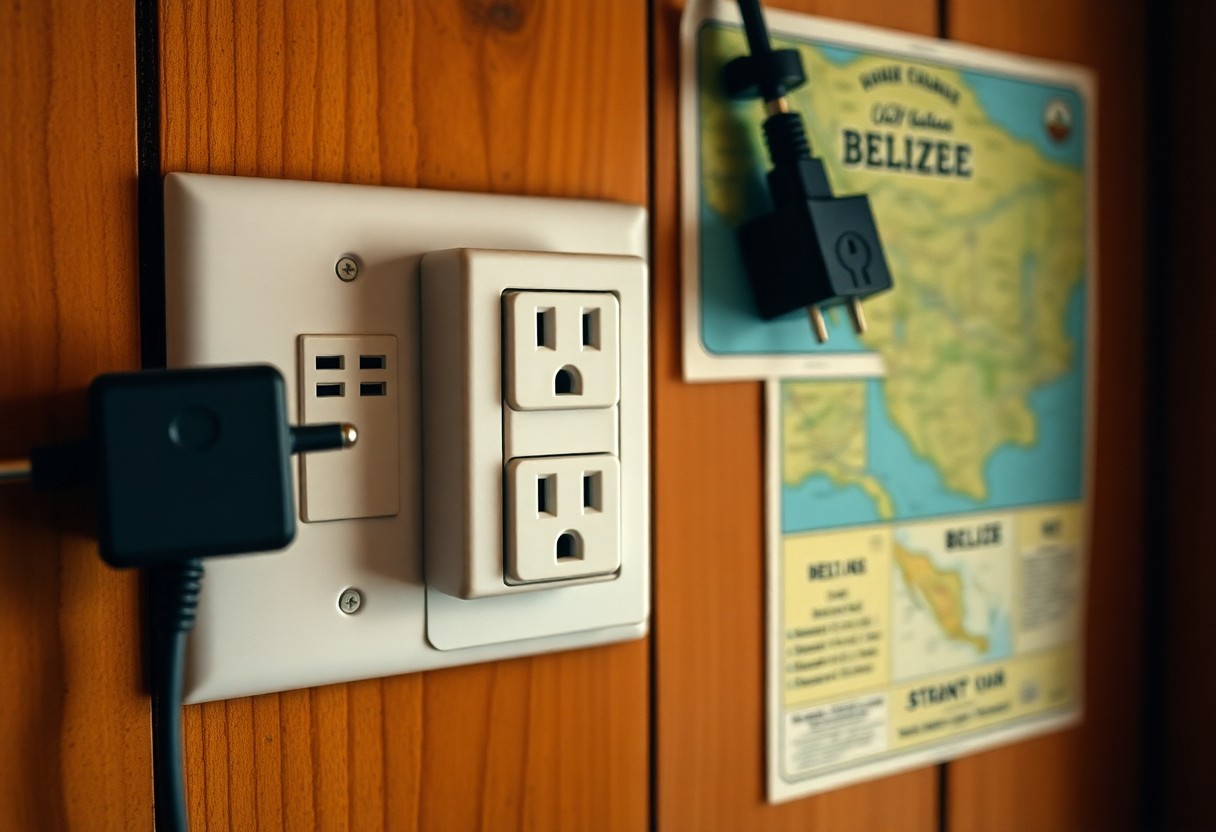
Where to Purchase or Borrow Electrical Adapters for Your Electronics in Belize
If you find yourself in need of electrical adapters while in Belize, there are several convenient options available to ensure your devices remain charged and functional. Purchasing an adapter before your trip is highly recommended, but if you forget, local resources can quickly resolve your electrical connectivity needs. You’ll discover various purchasing avenues that can save you from connectivity challenges during your Belizean adventure.
Locating Adapters at Local Hotels and Airports
Among the most accessible locations to obtain electrical adapters, many hotels situated in tourist areas offer adapter rentals or sales. Additionally, airport convenience stores and tourism information desks frequently stock universal adapters that are specifically designed for international travelers like yourself. These adapters are generally available at reasonable prices, ensuring you can power your devices without encountering significant hassle.
Exploring Hardware Stores in Belize for Reliable Adapter Solutions
For those venturing beyond tourist zones, local hardware stores in Belize provide reliable solutions for electrical adapters. You can find these stores in major cities like Belize City, San Ignacio, and Placencia. Typically, these shops carry a diverse range of adapter types, allowing you to find the exact configuration necessary for your electronic devices.
Moreover, hardware stores in Belize offer more than just basic adapters. They often stock high-quality electrical accessories that meet various international standards. You might discover professional-grade adapters equipped with surge protection, multiple plug configurations, and voltage converters. These stores recognize the diverse electrical needs of international travelers and stock their inventory accordingly, making them an excellent resource for your electrical adapter needs.
Key Insights for Ensuring a Smooth Experience in Belize
In summary, when traveling to Belize, it’s crucial to understand that electrical outlets may differ from US standards. Your thorough preparation can significantly impact your experience. Be sure to pack universal adapters and voltage converters to ensure your electronic devices operate seamlessly. Always check the compatibility of your specific devices with Belize’s electrical system, which typically utilizes 110-220V with Type A and B plugs. By understanding these electrical nuances beforehand, you can effectively avoid potential charging complications and stay connected throughout your Belizean adventure. Taking a proactive approach will guarantee uninterrupted access to your essential electronics while you enjoy the breathtaking landscapes and vibrant culture of this incredible country.
Your Frequently Asked Questions Addressed
What types of electrical outlets and voltage can I expect in Belize?
In Belize, you will encounter standard North American electrical outlets (Type A and Type B) that operate at 110-120 volts, identical to those found in the United States. Consequently, travelers from the US can typically plug in their devices directly without additional power adapters, making the process of ensuring electrical compatibility very convenient for American tourists.
Should I bring a voltage converter when I travel to Belize?
No voltage converter is needed for travelers coming from the United States. The electrical system in Belize aligns with US standards at 110-120 volts, meaning standard American electronics and chargers will function seamlessly. This electrical consistency eliminates the need for additional equipment purchases and minimizes potential compatibility challenges.
Are power surges or electrical inconsistencies common in Belize?
While the electrical infrastructure in Belize is generally stable, some rural or remote areas might experience occasional fluctuations in power supply. Travelers are encouraged to bring surge protectors for sensitive electronics, especially when visiting smaller towns or island locales. Urban centers such as Belize City provide more consistent electrical service, comparable to US standards.
The Article Are Belize Outlets the Same as in the US? Electrical Tips for Travelers appeared first on Belize Travel Guide
The Article Belize Outlets: Essential Electrical Tips for Travelers Was Found On https://limitsofstrategy.com
-

Electrical Safety Tips for Berwick Homeowners to Follow
Ensuring the electrical safety of your home’s system is not just about convenience; it is a fundamental aspect of safeguarding your loved ones and your valuable property from numerous potential hazards. In Australia, stringent electrical regulations have been instituted to mitigate risks, but as a conscientious homeowner, your comprehension of these regulations and adherence to superior safety practices can substantially bolster your home’s safety profile. By identifying possible dangers and proactively implementing preventative measures, you can play a vital role in cultivating a secure environment for everyone within your household, significantly reducing the likelihood of electrical incidents.
At Direct Point Electrical, we are dedicated to enhancing both the safety and efficiency of homes in Berwick and surrounding communities. Our unwavering commitment to delivering quality service ensures that your electrical systems not only comply with safety standards but also operate optimally to cater to your unique needs and preferences. We strive to provide you with peace of mind, knowing that your home is equipped to safely manage electrical demands while adhering to best practices in safety and efficiency.

1. Ensure Ultimate Safety and Legal Compliance by Hiring a Licensed Electrician
In Australia, it is legally mandated that only licensed electricians are authorized to perform electrical work on your property. This regulation exists to guarantee that all electrical installations and repairs comply with the Electricity Safety Act 1998 and relevant Australian Standards, such as AS/NZS 3000:2018 (Wiring Rules). By hiring a licensed professional, you can rest assured that the work performed adheres to established safety protocols, thereby dramatically reducing the risk of potential hazards and effectively safeguarding your home from electrical mishaps.
Attempting DIY electrical work is not only illegal in Victoria but also poses substantial risks to your safety and the integrity of your property. If you require help with electrical installations, repairs, or maintenance, it is crucial to reach out to a qualified, licensed electrician who possesses the right expertise and training.
Learn more about our extensive range of general electrical services here to ensure your needs are met with professionalism and care.2. Regularly Test Your Safety Switches for Enhanced Operational Reliability
Safety switches, commonly referred to as residual current devices (RCDs), are crucial for preventing electric shocks and fires within the home environment. Victorian legislation mandates that safety switches must be installed on all power and lighting circuits in newly constructed homes and rental properties. Regular testing of these devices is essential to confirm their operational status and ensure they are functioning correctly, which is vital for your safety.
We recommend conducting tests on your safety switches every three months to maintain a high level of safety assurance. Here’s a simple procedure to follow:
- Press the “Test” button located on the switch to initiate the test process.
- If the switch trips, reset it to verify that it is functioning correctly.
- If the switch fails to trip or reset, contact a qualified electrician immediately for professional assistance to avoid any risks.
If you require support with the installation or testing of safety switches, our dedicated team is ready to assist you in ensuring your home remains safe and compliant with all regulations.
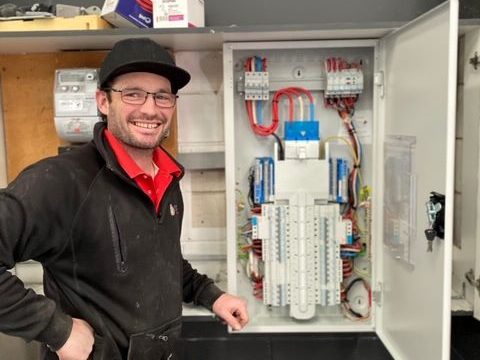
3. Prevent Dangerous Electrical Fires by Avoiding Overloading Power Points
Overloading electrical circuits is one of the leading causes of electrical fires in residential settings. To ensure compliance with critical electrical safety guidelines and effectively protect your property, consider implementing the following preventative measures to minimize risks:
- Utilize power boards with built-in surge protection to safeguard your valuable appliances against unexpected surges that could cause damage.
- Avoid plugging multiple devices into a single outlet, as this practice significantly increases the risk of overload and potential hazards that could jeopardize your home’s safety.
- If you frequently experience tripped circuit breakers, it may indicate a larger underlying issue, prompting the need to consider upgrading your electrical system for better performance and safety.
If your home’s electrical circuits are under constant strain, explore our various options for electrical upgrades that enhance both safety and efficiency, ensuring your home operates smoothly and securely.
4. Conduct Annual Smoke Alarm Checks for Maximum Fire Safety
Smoke alarms are essential for ensuring safety and are mandated by law in all Victorian residences under the Residential Tenancies Act 1997. These critical devices must be properly installed in all bedrooms and hallways leading to sleeping areas to guarantee that effective fire safety protocols are in place and functioning correctly.
To maintain compliance and ensure optimal safety, we recommend the following procedures:
- Test your smoke alarms on a monthly basis to confirm they are functioning correctly and can alert you in case of fire.
- Replace batteries at least once a year to ensure continuous operation without interruptions.
- Completely replace the smoke alarm unit every ten years, as older models can degrade and may not function reliably during emergencies.
If you are building or renovating, we can assist you with the installation of interconnected smoke alarms as part of our comprehensive new home electrical services, ensuring your safety is prioritized and compliant with regulations.

5. Stay Vigilant About Outdoor Electrical Hazards for Maximum Safety
Outdoor electrical safety is an often-overlooked aspect of home safety that merits your attention. Faulty wiring or exposed cables in outdoor areas can lead to severe accidents and injuries, making it crucial to remain vigilant and aware of potential hazards within your outdoor electrical systems.
Follow these essential outdoor safety tips to protect yourself and your property from electrical dangers that lurk outside:
- Always utilize weatherproof outlets when operating outdoor electrical appliances to prevent moisture-related hazards that could compromise safety.
- Regularly inspect your outdoor lighting and wiring for any signs of damage or wear that could pose risks and require immediate attention.
- Maintain a safe distance from powerlines when performing outdoor work, strictly adhering to the guidelines set by Energy Safe Victoria (ESV) to ensure your safety and that of others.
6. Schedule Routine Electrical Inspections to Uncover Hidden Issues Early
Regular electrical inspections serve as an effective method to uncover concealed issues before they escalate into significant problems. In accordance with regulations in Victoria, homeowners are encouraged to have their electrical systems assessed periodically, especially if the home is older or has undergone major renovations recently.
Our dedicated team at Direct Point Electrical offers thorough and professional electrical inspections to ensure your home meets all safety standards and regulations. We strive to provide peace of mind by ensuring your electrical systems operate safely and efficiently, allowing you to focus on what matters most in your life.
Prioritize Your Electrical Safety with Direct Point Electrical’s Expertise
Electrical safety is a shared responsibility between homeowners and qualified professionals. By adhering to Victorian legislation and implementing these essential safety tips, you can cultivate a secure environment for your family and loved ones, significantly reducing risks associated with electrical systems.
If you need expert assistance with any aspect of your home’s electrical system, don’t hesitate to reach out to Direct Point Electrical today. We are devoted to helping homeowners in Berwick maintain safety and compliance in their electrical systems while ensuring peace of mind and security for your home.
The Article: Essential Electrical Safety Tips for Berwick Homeowners first appeared on https://writebuff.com
The Article Electrical Safety Tips Every Berwick Homeowner Should Know Was Found On https://limitsofstrategy.com
-

Electrical Tape Melting: Key Facts You Need to Know
Discover the Importance of Electrical Insulation Tape for Ensuring Electrical Safety
Electrical insulation tape is a critical tool in the world of electrical safety, providing essential protection for various types of electrical wires and cables. Often known as insulating tape, this indispensable material helps to prevent dangerous electrical shorts and shields wires from moisture, dust, and physical wear. Whether in a professional setting or at home, the role of this tape cannot be overstated. By understanding its significance, you can take proactive steps to avoid electrical hazards and keep your workspace organized and efficient.
Electrical insulation tape comes in a multitude of sizes, lengths, and colors, each designed for specific applications. The variety not only improves insulation efficiency but also assists in the organization of cables through color-coding. By employing different colors, you can enhance your workflow, enabling quick identification of specific wires. This streamlined approach not only boosts productivity but also fosters a safer working environment by minimizing the risk of mistakes during electrical projects.

Essential Conditions Leading to Electrical Tape Melting: What You Need to Know
Indeed, electrical tape can melt under specific conditions. In this section, we will provide a comprehensive analysis of the temperature thresholds that electrical tape can withstand, outline the environmental factors leading to melting, and pinpoint key indicators of overheating that require your attention. Understanding these elements is crucial to ensure the safe and effective application of electrical insulation tape in diverse situations.
Understanding the Temperature Thresholds of Electrical Tape for Safe Application
Like many materials, electrical tape has defined temperature limits that must be respected for safe and effective use. Most standard electrical tapes can endure temperatures of up to approximately 80°C, while specialized heavy-duty variants can withstand slightly higher temperatures. When the ambient or surface temperatures exceed these limits, the structural integrity of the tape may become compromised, leading to potential failures that could jeopardize electrical safety.
As temperatures escalate and approach the upper limits of the tape’s tolerance, its effectiveness diminishes significantly. This degradation can be evidenced by various symptoms, such as melting, a gooey consistency, or in severe cases, total failure. Being cognizant of these temperature limitations is vital for maintaining both safety and functionality in electrical applications, ensuring that your projects can be completed without facing unnecessary risks.
For environments with extreme temperature fluctuations, it is advisable to consider high-temperature variants of electrical tape. For example, heat-resistant tape, made from durable materials like fiberglass or silicone, can endure temperatures of up to 200°C or even more, making it particularly suitable for applications exposed to high heat.
Also Read: Keep Your Pets Safe Around Electricity
Request a Quote Today!
Inquire About Our FREE Electrical Inspections
Factors Contributing to the Melting of Electrical Tape: What to Watch For
Electrical tape can melt for various reasons, predominantly due to excessive heat exposure. Understanding these causes is vital for ensuring safe and efficient use. Here are some common factors that may lead to the melting of electrical tape:
The Impact of Excessive Heat Exposure on Electrical Tape Performance
The leading cause of electrical tape melting is its exposure to high temperatures. If the tape is placed near hot surfaces, engines, or components that generate heat, it can begin to soften, bubble, or even completely melt. Additionally, electrical systems, particularly power circuits, can generate heat levels that exceed the tape’s rated capacity, especially during malfunctions or overload situations.
Therefore, it is crucial to evaluate the temperature ratings of the tape when using it near high-temperature areas to mitigate potential failures and maintain safety standards.
The Role of Environmental Factors in Electrical Tape Degradation
Electrical tape is not designed to have an indefinite lifespan. Over time, both the adhesive and the tape itself can degrade, particularly when exposed to harsh environmental conditions such as UV light, moisture, or extreme temperatures. This degradation can significantly diminish the insulating capabilities of the tape. As it ages, the tape may lose its effectiveness, becoming more susceptible to melting even at lower temperatures than it would typically tolerate.
Regular wear and tear are part of the natural lifecycle of electrical tape. Consequently, it is essential to routinely check the tape for any signs of aging or damage to ensure ongoing safety and performance.
Understanding the Risks Involved with Improper Application of Electrical Tape
Applying electrical tape under unsuitable conditions can lead to premature failure. For instance, if the tape is wrapped too tightly, subjected to friction or heat, or overstretched during application, its performance may become compromised. Moreover, wrapping the tape around sharp edges or applying it to components prone to overheating, such as light bulbs or electrical outlets, can lead to complications unless the tape is specifically rated for such uses.
Also Read: 10 Ways to Save On Power And Energy CostsKey Signs Indicating Your Electrical Tape is Overheating
If you suspect that your electrical tape is overheating, there are several critical signs to observe. Here are the most common indicators that your tape may be melting or experiencing excessive heat:
Identifying a Sticky or Tacky Texture as a Sign of Overheating
A noticeable change in texture, particularly a sticky or tacky feel, is often one of the first signs that electrical tape is melting. This alteration can serve as an early warning of further degradation, signaling that the tape may no longer provide sufficient insulation.
Detecting Discoloration as a Warning of Heat Damage
Overheating electrical tape may show visible discoloration. You might observe a transition from its standard black or colored appearance to hues of brown, dark gray, or even black. This change occurs as heat leads to the breakdown of the tape’s PVC or other materials. Early identification of this issue can prevent further damage to your wires; if ignored, it could lead to melting or even pose fire hazards.
Observing Bubbling or Distortion as Indicators of Excessive Heat
If electrical tape begins to bubble, distort, or warp, it signals that heat is adversely affecting its structural integrity. This typically happens when heat causes the adhesive or plastic layers to separate or deteriorate. The surface may appear uneven or wavy, indicating that temperatures are exceeding safe levels. Upon noticing these bubbles, it is prudent to consult with your electrician for a thorough assessment.
Recognizing a Burning Smell: A Critical Warning Sign
A burning odor near electrical tape is a serious warning that should not be ignored. This smell may resemble that of melting plastic or burning rubber. When excessive heat causes the adhesive to degrade, the resulting fumes can be alarming. Do not overlook this warning. If you detect a burning smell, it may indicate that the tape is on the verge of melting or even igniting.
Visible Smoke as an Urgent Alert
Smoke emanating from electrical tape is a clear signal that heat levels have far exceeded what the tape can safely tolerate. This is a strong indicator that the tape has likely begun to melt or may even be igniting. At this critical moment, it is essential to turn off the power source immediately and seek assistance from your electrician.
Remember – Never use water to extinguish an electrical fire. Instead, use a CO2 fire extinguisher for safety.
Essential Steps to Take If Your Electrical Tape Melts: A Safety Protocol
If your electrical tape melts, the first step is to disconnect all power sources or turn off any equipment to ensure safety.
Prioritizing safety is crucial, as electrical hazards can pose significant risks to both life and property.After ensuring that the area is safe, always consult your electrician for expert advice. If a professional installed the tape, they may need to assess the area for any underlying electrical issues that could have contributed to the problem, ensuring comprehensive safety and functionality in your electrical systems.
Exploring Alternatives to Electrical Tape for High-Temperature Environments
If you frequently work in environments where temperatures exceed the limits of standard electrical tape, it is wise to consult your electrician about suitable alternatives. Here are some options worth considering:
- Heat-resistant silicone tape: This tape is specifically engineered to withstand elevated temperatures and is ideal for applications where heat is a critical concern.
- Fiberglass tape: This robust option can handle extreme temperatures without compromising performance or safety.
- Mica or ceramic insulation: For the highest level of heat protection, specialized materials such as mica or ceramic serve as excellent choices.
Valuable Insights on the Risks Associated with Melting Electrical Tape
In summary, electrical tape can indeed melt, primarily due to excessive heat exposure. Recognizing the temperature limits of your tape and ensuring that you select the appropriate type for your specific application are critical steps in preventing potential issues.
By staying alert to signs such as discoloration, stickiness, or unusual odors, you can act swiftly to mitigate risks. Always prioritize safety and do not hesitate to reach out to your local electrician for expert guidance whenever necessary.
Request a Quote Today!
Inquire About Our FREE Electrical Inspections
The Article: Does Electrical Tape Melt? Here’s What You Need to Know first appeared on https://writebuff.com
The Article Electrical Tape Melting: Essential Facts You Should Know Was Found On https://limitsofstrategy.com
-

A Beginner’s Guide to Safely Navigate Electrical Wiring
Electrical wiring is a fundamental aspect of any building’s infrastructure, enabling the safe and efficient distribution of electricity throughout our homes and workplaces. Whether you’re a DIY enthusiast or simply curious about how your electrical system works, having an understanding of the basics of electrical wiring is essential. In this article, we will delve into the key concepts and principles behind electrical wiring, providing you with an overview that will help demystify this crucial component of modern life.
From outlets to light fixtures, switches to circuit breakers, electrical wiring forms the backbone of our power supply network. It involves connecting various components using conductive materials to ensure electricity flows reliably from its source to where it is needed. Understanding how these connections are made and what safety measures need to be in place is vital for anyone working with or simply reliant on electricity. So whether you’re planning a home improvement project or just aiming to broaden your knowledge about household systems, join us as we explore the basics of electrical wiring.
In summary: Electrical wiring plays a critical role in providing power within our buildings by establishing connections between different components using conductive materials. Gaining a foundational understanding of these connections and safety precautions is important for both professionals working with electricity and individuals seeking general knowledge about their household systems. Join us as we delve into the fundamentals of electrical wiring in this informative article.
Electrical Safety Precautions
When it comes to electrical wiring, safety should always be a top priority. Taking the necessary precautions can help prevent accidents and ensure that your electrical installations are done correctly. Here are some important safety measures to keep in mind:
- Turn off the power: Before working on any electrical circuit or device, make sure to turn off the power at the main breaker panel. This will minimize the risk of electric shock.
- Wear protective gear: Always wear appropriate personal protective equipment (PPE) such as insulated gloves, goggles, and non-slip shoes when handling electrical components or working on live circuits.
- Inspect before touching: Before starting any work, visually inspect all wires, cables, and outlets for signs of damage like fraying or exposed wires. Never touch anything if you suspect a problem; instead, call a qualified electrician for assistance.
- Avoid water contact: Water is an excellent conductor of electricity and can significantly increase the risk of electrocution. Keep your hands dry while working with electrical equipment or near outlets.
- Use proper tools: Ensure you have suitable tools for each task and use them correctly to avoid accidents or damaging wiring systems. Insulated screwdrivers and wire strippers can help reduce the chances of accidental shocks.
- Don’t overload circuits: Overloading circuits by plugging too many devices into one outlet can lead to overheating and potential fire hazards – distribute loads evenly across multiple outlets whenever possible.
- Label circuit breakers: Properly label each circuit breaker in your main panel box so that you know which switch controls which area of your home’s electrical system – this makes it easier to identify specific areas during maintenance or emergencies.
Remember, if you’re unsure about any aspect of electrical wiring or encounter complex issues during installation or repairs, it’s best to consult a licensed electrician who has expertise in handling such tasks.
Types of Electrical Wires
When it comes to electrical wiring, there are different types of wires that serve specific purposes. Understanding these wire types is essential for any DIY enthusiast or homeowner looking to work on their electrical projects. Here are the most common types of electrical wires:
- Non-Metallic Sheathed Cable (NM) – Also known as Romex cable, NM cable consists of two or more insulated conductors wrapped in a plastic sheath. It is commonly used for residential wiring and can be easily identified by its white, yellow, or orange outer jacket.
- Armored Cable (AC) – AC cable features insulated conductors protected by a flexible metal covering, usually made of aluminum or steel. This type of wiring provides an extra layer of protection against physical damage and is often used in commercial and industrial applications.
- Metal-Clad Cable (MC) – MC cable combines the benefits of armored cables with easier installation due to its lightweight construction. It has a green grounding wire along with insulated conductors enclosed in a protective metal casing.
- Conduit – Conduits are tubes made from materials like PVC, galvanized steel, or aluminum that protect individual wires within them. They come in different sizes and can be either rigid or flexible depending on the application requirements.
- THHN/THWN Wire – These wires have thermoplastic insulation suitable for both dry and wet locations respectively – THHN for dry areas and THWN for wet ones like basements or outdoor installations.
- Low-Voltage Wiring – Low-voltage wiring carries less than 50 volts and is commonly used for doorbells, thermostats, security systems, audio/video connections, and landscape lighting installations.
Understanding Circuit Breakers
Circuit breakers play a crucial role in electrical wiring systems by protecting them from overloads and short circuits. Here’s what you need to know about circuit breakers:
- Function: Circuit breakers act as safety devices that automatically interrupt the flow of electricity when there is an overload or a short circuit in the system. This helps prevent damage to equipment, fires, and electrical hazards.
- Components: A typical circuit breaker consists of three main components:
- Switch: The switch allows you to manually turn the circuit on or off.
- Tripping Mechanism: This mechanism detects abnormal current flows and triggers the interruption of power.
- Contacts: Contacts are responsible for opening and closing the electric circuit.
- Types:
- Standard Circuit Breaker: These are commonly used in residential and commercial buildings, designed to handle regular load capacities.
- Ground Fault Circuit Interrupter (GFCI): GFCIs provide additional protection against electric shocks by quickly shutting off power if it detects a ground fault.
- Arc Fault Circuit Interrupter (AFCI): AFCIs detect dangerous arcing faults that could lead to fires and immediately cut off power.
- Rating: Each breaker has a specific rating expressed in amps (e.g., 15A, 20A). It indicates how much current flow it can handle before tripping.
- Resetting: When a circuit breaker trips due to an overload or short circuit, it needs resetting after identifying and addressing the underlying issue causing the trip.
- Location: You can typically find your home’s main circuit breaker panel near your utility meter or inside your home at its entry point.
Remember that working with electrical systems can be dangerous if not done properly; always consult a professional electrician for any complex wiring tasks or troubleshooting issues.
By understanding how circuit breakers work and their importance in electrical systems, you can ensure the safety of your home or workplace.
Common Wiring Terminology
When it comes to electrical wiring, understanding the common terminology used is essential. Here are some key terms you should know:
- Circuit: A circuit refers to a complete path that allows electric current to flow.
- Conductor: A conductor is a material that can carry an electric current, such as copper or aluminum wires.
- Insulation: Insulation is a protective covering used on wires and cables to prevent contact with other conductors or surfaces.
- Grounding: Grounding involves connecting electrical systems and devices to the ground in order to protect against electrical faults and ensure safety.
- Voltage: Voltage measures the force or pressure of electricity flowing through a circuit, typically measured in volts (V).
- Current: Current refers to the flow of electric charge in a circuit and is measured in amperes (A).
- Resistance: Resistance is the opposition offered by a material or device against the flow of electric current, measured in ohms (Ω).
- Switch: A switch controls whether an electrical circuit is open (off) or closed (on), allowing or interrupting the flow of electricity.
- Outlet/Receptacle: An outlet, also known as a receptacle, provides access points for plugging in appliances and devices into an electrical system.
- Breaker/Fuse Box: The breaker box houses circuit breakers/fuses that protect circuits from overloads by automatically cutting off power when necessary.
- Junction Box: Junction boxes are enclosures where multiple wires connect together safely while providing protection from damage and reducing fire risks.
Tools for Electrical Wiring
When it comes to electrical wiring, having the right tools is essential. Here are some of the most important tools you’ll need:
- Wire Strippers: These handy tools allow you to strip off the insulation from wires easily and safely.
- Screwdrivers: A set of screwdrivers with different sizes and types of heads will come in handy when working with screws on outlets, switches, and other electrical components.
- Pliers: Pliers are versatile tools that can be used for gripping, twisting, or cutting wires as needed.
- Voltage Tester: Before working on any electrical circuit, always use a voltage tester to ensure that there is no power running through it.
- Fish Tape: This flexible tape is used for pulling wires through walls or conduits during installation.
- Circuit Tester: A circuit tester helps identify if a circuit has an open or closed connection by testing continuity.
- Electrical Tape: Electrical tape is used to insulate wire connections and provide added protection against electrical shocks and short circuits.
- Multimeter: A multimeter measures various aspects of an electrical circuit such as voltage, current, resistance, and continuity.
- Wire Nuts/Wire Connectors: These small caps are used to securely connect two or more wires together while also insulating them from each other.
- Fish Rods/Rods & Conduit Tools: Fish rods help in routing cables through tight spaces like ceilings or walls without damaging them.
Remember that safety should always be your top priority when working with electricity! Make sure to wear protective gear such as gloves and goggles whenever necessary.
Step-by-Step Guide to Wiring a Light Switch
To help you understand the basics of electrical wiring, we’ve put together a step-by-step guide on how to wire a light switch. Follow these instructions carefully to ensure safety and proper functionality:
- Gather the necessary tools: Before starting any electrical work, make sure you have the following tools at hand:
- Wire cutters
- Wire strippers
- Screwdrivers (both flathead and Phillips)
- Voltage tester
- Electrical tape
- Turn off the power: Locate your circuit breaker panel and turn off the power supply to the area where you’ll be working.
- Remove cover plate: Use a screwdriver to remove the cover plate from your existing light switch.
- Test for live wires: Use a voltage tester or multimeter to check if there is any electricity flowing through the wires connected to your light switch.
- Disconnect old switch: Once you’ve confirmed that it’s safe, disconnect the old switch by unscrewing its terminals from their respective wires.
- Prepare new switch: Take your new light switch and identify its brass-colored screws (these are for hot wires) and silver-colored screws (for neutral wires).
- Connect hot wires: Connect one of the hot wires from your wall to either of the brass-colored screws on your new switch using wire nuts or terminal connectors.
- Connect neutral wires: Similarly, connect one of thd neutral wores from yout wall wirh either od thr silver colored s rewsonour now swotch usimg wiire nuts or terkinal conectirs
- Grounding: If there is an additional green or copper ground wire in your junction box, connect it securely with grounding screw provided onthe swich.
- Attach New Switch: Carefully placeyournew switch back into the junction box, making sure that all wires are properly tucked inside. Secure the switch in place by tightening the screws on its sides.
- Test and Reassemble: Turn the power back on at your circuit breaker panel and test your new light switch. If it works correctly, reattach the cover plate.
Remember to always prioritize safety when working with electricity. If you’re unsure about any step or feel uncomfortable handling electrical work, it’s best to consult a professional electrician for assistance.
Troubleshooting Common Electrical Issues
When it comes to electrical wiring, troubleshooting common issues can help you identify and fix problems quickly. Here are some common electrical issues you may encounter and how to troubleshoot them:
- Tripped Circuit Breaker: If a circuit suddenly stops working, check if the circuit breaker has tripped. To reset it:
- Locate your main electrical panel.
- Open the panel door.
- Find the tripped breaker (it will be in the “off” position).
- Push the breaker firmly into the “on” position.
- Flickering Lights: Flickering lights can indicate loose connections or a faulty bulb. Try these steps to troubleshoot:
- Make sure all light bulbs are securely screwed in.
- Replace any flickering bulbs with new ones.
- If flickering persists, check for loose connections at light fixtures or switches.
- Electrical Outlet Not Working: When an outlet is not functioning, follow these troubleshooting steps:
- Check if other outlets on the same circuit are working; if they’re not, a tripped breaker could be causing the issue.
- Inspect for any visible damage or discoloration around the outlet itself.
- Use a non-contact voltage tester to see if there’s power flowing through the outlet wires.
- If necessary, turn off power at your main panel before replacing an outlet.
- Overloaded Circuits: Overloading circuits occurs when too many appliances draw power from one circuit simultaneously, resulting in tripped breakers or blown fuses:
- Identify which appliances may be causing overload by unplugging everything connected to that circuit.
- Distribute high-power devices across multiple circuits evenly.
- GFCI Outlet Keeps Tripping: Ground Fault Circuit Interrupter (GFCI) outlets protect against electrical shocks. If your GFCI outlet keeps tripping, follow these steps:
- Press the “Reset” button on the outlet.
- If it trips immediately after resetting, unplug all devices from the outlets and try again.
- If it continues to trip, there may be a fault in the wiring or a defective GFCI outlet.
Remember, if you’re unsure about any electrical troubleshooting or encounter more complex issues, it’s always best to consult with a licensed electrician for professional assistance.
Conclusion
In conclusion, understanding the basics of electrical wiring is essential for anyone looking to tackle home improvement projects or address electrical issues. By grasping fundamental concepts such as circuits, wires, and safety precautions, individuals can confidently navigate the world of electrical systems.
 With this knowledge in hand, homeowners can safely perform simple tasks like changing a light fixture or installing a new outlet. Additionally, they will be better equipped to communicate with electricians and understand the work being done in their homes.
With this knowledge in hand, homeowners can safely perform simple tasks like changing a light fixture or installing a new outlet. Additionally, they will be better equipped to communicate with electricians and understand the work being done in their homes.Remember that while basic wiring skills are useful for DIY enthusiasts, it’s crucial to prioritize safety at all times. If you’re unsure about any aspect of an electrical project, it’s always best to consult a professional electrician who has the expertise and experience to handle complex tasks safely.
By familiarizing yourself with these foundational principles of electrical wiring and recognizing when to seek professional help, you’ll be well on your way to maintaining a safe and functional home environment.
The Article A Beginner’s Guide to Safely Navigate Electrical Wiring First Appeared ON
: https://ad4sc.com -
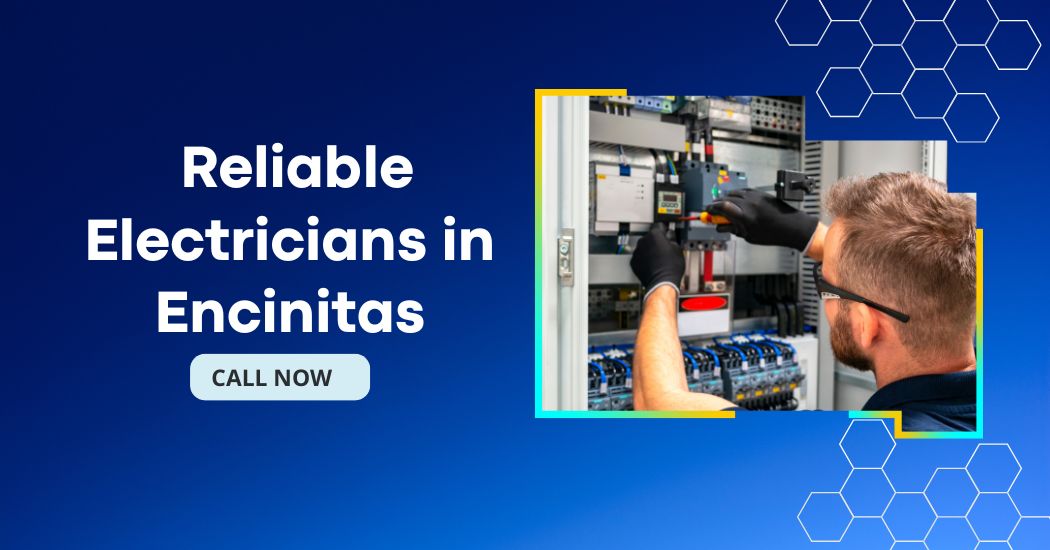
Avoiding Common Mistakes: Why Hire a Professional Electrician
As a homeowner, it’s natural to want to save money on home repairs and improvements. However, when it comes to electrical work, hiring a professional electrician is essential. A professional electrician has the knowledge, skills, and experience needed to ensure that your electrical system is installed or repaired safely and efficiently.
In this article, we’ll explore why you should hire a professional electrician for your home’s electrical needs. From ensuring safety to preventing costly mistakes and saving time in the long run, there are numerous benefits of working with an experienced electrician. So if you’re considering tackling an electrical project yourself or hiring an unlicensed contractor, read on to discover why hiring a professional electrician is always the best choice.
Why You Should Hire a Professional Electrician
Professional electricians can troubleshoot problems, and they can also install new features for your property. These experts can also help you save money by maximizing your electricity usage.
Electricians follow strict safety guidelines when working on electrical systems. This means that your family and your belongings are safe. In addition, they will have access to the best tools and equipment for the job.
Safety
Licensed electricians are aware of all the electrical codes they must comply with when they perform repair work. If they do not follow these codes, they could end up facing fines and other issues. This is especially important since electrical work can be extremely dangerous. Moreover, incorrect repairs can create long-term safety hazards. For instance, an electrical fire can destroy the entire house and cost thousands of dollars to fix.
When looking for a licensed electrician, you should always check their references and past work. Look for professional workmanship and neatness. Also, make sure they are licensed and insured. Additionally, you should choose an electrician that has good business ratings and user reviews. You should also visit their website and see what other services they offer. Lastly, you should ask about their pricing.
A licensed electrician will perform a thorough inspection of your home or business and will detect any problems that may pose a threat to your safety. This will give you peace of mind, knowing that your home is safe from potential accidents. Moreover, it will allow you to avoid costly repairs in the future.
In addition, a licensed electrician will use a voltmeter to ensure that there is no voltage present before starting work. This is an important step that many people overlook when working on a DIY project. If you don’t do this, you might unknowingly reconnect electricity to your device or appliance, which can lead to serious injuries.
Another important aspect of hiring a professional electrician is that they are trained in handling complex electrical issues and are more likely to get it right the first time. This is because they have completed relevant education and are skilled in the field of electrical systems and installations. Moreover, they regularly keep up with the latest electrical studies and practices.
The Electrical Safety Foundation of Indiana (ESFi) advises homeowners to turn off the main circuit breaker before performing any electrical work. It also urges them to use extension cords sparingly and to check for kinks, cracks, or splints before each use. It is also recommended to wear rubber gloves and eye protection when working with electricity.
Reliability
Professional electricians are licensed to work in your home, meaning they must comply with local electrical codes. These codes are designed to keep your home safe and avoid fire hazards. If an unlicensed electrician performs work on your home and violates these codes, it could lead to property damage or even a house fire. Licensed electricians understand these rules and are trained to work safely in your home.
In addition to being trained in safety, professional electricians have access to tools and equipment that you won’t have. This means that they can fix your issues quickly and correctly the first time, saving you both time and money. Additionally, if you hire a professional electrician to do your work, they will be able to provide you with advice about how to improve your energy efficiency. This can save you a lot of money in the long run by reducing your energy bills.
Another reason to hire a professional electrician is that they are familiar with all aspects of your electrical system. This includes the wiring, circuits, and fuses. They also know how to troubleshoot problems and replace parts. In addition, they can help you choose the best lighting fixtures and appliances for your home or business. This will give your space a more modern look and feel.
Electricians are highly detail-oriented, so they know that a mistake in the wiring can cause a fire or other dangerous situation. They also understand the intricacies of electrical systems, so they can identify and repair any errors. A homeowner can spend thousands of dollars on repairs if they make a mistake in a DIY project.
In addition, hiring a professional electrician can save you the stress of dealing with insurance claims, which are often required if there is an electrical problem. It is also much less expensive to hire a professional electrician than it is to buy replacement parts for an appliance that has been damaged by a faulty electrical connection. Additionally, a professional will be able to handle multiple projects at once and work around your schedule.
Convenience
Professional electricians are licensed professionals who adhere to strict safety guidelines. They will use their knowledge of the newest electrical systems to help you find options that fit your home and budget. They also know how to install energy-efficient appliances and lighting fixtures to help you save money on your utility bills.
Electricians are detail-oriented and can identify any problems that might exist in a wiring project. Their work requires them to read blueprints and technical diagrams of a building’s electrical system. They also work with specialized tools and equipment to perform their job, such as voltmeters and ammeters.
A licensed electrician will bring all the necessary tools needed for the job, saving you money on purchasing them yourself. They will also have access to more energy-efficient materials that are often unavailable to non-licensed contractors.
Most towns and cities require a license for any individual who wants to perform any type of electrical work, including changing light bulbs or installing a new power outlet. A license is essential because working on an electrical system can be extremely dangerous if done incorrectly. There are many non-fatal electrocutions each year, and the last thing you want is to be one of them.
While it may seem tempting to save a few dollars by doing your own electrical repairs, it’s always best to leave the work to the pros. A simple mistake could lead to a fire or electric shock, which is not something you want in your home. Hiring a professional electrician is the safest and quickest way to get the job done right. They will also make sure that your home’s electrical system is up to date, which can protect you from expensive repair bills in the future. This makes hiring a professional electrician the smart choice for any homeowner or business owner.
Cost
A professional electrician will make sure that the job is completed correctly the first time. This will help prevent costly mistakes in the future. For example, if shoddy wiring causes a house fire, your insurance may not cover the damage. In addition, improper wiring can be dangerous for children and pets. A professional will ensure that all work is done safely and follows strict safety regulations.
A professionally trained electrician will be able to give you advice on energy efficient appliances and lighting. They will also be able to install features like dimmer switches and motion sensor lights that can save you money on your energy bills.
There are a number of factors that affect the cost of an electrician. For example, the more experience an electrician has, the higher their fee will be. Additionally, the location of the job can also impact the cost. Some electricians travel long distances to reach their jobs, and this can add up to a significant increase in their charges.
Another factor to consider is the hourly rate of an electrician. Most electricians are paid by the hour, but it is important to understand that the hourly rate includes overhead costs and insurance. For this reason, you should always get multiple quotes from different electricians before choosing one.
 To become a licensed professional electrician in New York, you must pass both a written and practical exam. The written exam covers knowledge of the codes and regulations for working with electrical systems, while the practical test covers hands-on experience. You must also pass a background check and submit a Social Security history of earnings.
To become a licensed professional electrician in New York, you must pass both a written and practical exam. The written exam covers knowledge of the codes and regulations for working with electrical systems, while the practical test covers hands-on experience. You must also pass a background check and submit a Social Security history of earnings.In order to qualify for a position as an electrician, you must have a high school diploma or GED certificate. You must also have a valid drivers’ license and the appropriate tools for the job. In addition to these requirements, you must be knowledgeable about electrical circuitry and safety. You must also have good interpersonal skills, as you will be dealing with customers on a daily basis.
A career as an electrician is a rewarding choice, especially if you enjoy the challenge of solving problems and making repairs. However, you must take your time to learn the trade and obtain all the necessary certifications. In addition, you must be dedicated to putting your customer’s safety first.
The Article Avoiding Common Mistakes: Why Hire a Professional Electrician First Appeared ON
: https://ad4sc.com -

8 Safety Tips for Electricians
Safety Tips for Electricians
As an electrician, you must do several tasks on a daily basis in order to achieve your company or professional objectives. Being prompt, communicating with your team, and being efficient is all part of this.
One of the most critical components of your employment, though, is safety. Every day, you are exposed to various hazards that might result in significant injury or death. That is why it is critical to follow these eight electrician safety precautions.
1. Always Wear the Proper Protective Gear
Wearing the correct protective gear is one of the most critical safety advice for electricians. This includes the following:
Gloves: Not all gloves are designed to keep you safe from electrical risks. Make certain that you are using electrician-specific gloves. These gloves should be constructed of high-voltage-resistant materials.

Eye Protection: Another essential piece of equipment is eye protection. There is always the risk of sparks or debris flying into your eyes while dealing with electricity. Wearing safety glasses or a face shield will screen your eyes from these threats.
Ear Protection: When dealing with electricity, noise levels may potentially be a threat. When working with noisy equipment, always use ear protection to safeguard your hearing.
Proper Clothing: It is also important to dress appropriately for work. This includes not wearing any loose clothing or jewelry that might come into touch with any electrical risks.
Never work without wearing all of the essential protective clothes. It is not worth jeopardizing your health (or perhaps your life) for a little inconvenience.
2. Never Work Alone
Another electrical safety precaution is never to work alone. Always have someone else close in case of an emergency. If you are wounded or want assistance with your job, this individual can aid you.
Furthermore, having someone else nearby might help you remain focused on your task and prevent distractions. When dealing with high voltage electricity, this is very crucial. Furthermore, being able to discuss the electrical problem with a properly certified and an experienced colleague might give you the confidence to continue and ensure an accurate electrical diagnosis and cure.
3. Be Aware of Your Surroundings
When dealing with electricity, it is critical to be always aware of your surroundings. This includes being mindful of power lines, electrical panels, and other potential risks in the region.
Furthermore, you should be aware of any possible fire threats. Make sure that combustible items are kept away from electrical equipment.
4. Never Touch a Live Wire
Touching a live wire is one of the most hazardous things an electrician can do. If you must operate with live wires, use great care and ensure that you are well insulated from the threat.
De-energize the area if feasible before commencing work. If you come into touch with a live wire, this will assist lower your chance of harm.
5. Use the Proper Tools
Another piece of electrical safety advice is always to use the right tools. This involves utilizing the appropriate tool size and type for the work. A digital multimeter, voltage tester, circuit finder, diagonal and side cutting pliers, long nose pliers, wire strippers, fish tape, knives, and screwdrivers are among the essential instruments for every electrician.
Furthermore, you should carefully examine your tools before using them. Check that they are in excellent shape and free of flaws.
6. Follow Manufacturer Instructions
When dealing with electrical equipment, it is critical to follow the manufacturer’s instructions. These instructions are intended to help you use the device safely and prevent dangers.
Before commencing work, ask your supervisor or another trained person if you have any questions regarding how to operate a piece of equipment.
7. Never Skip Safety Steps
When dealing with electricity, it might be tempting to take shortcuts. However, it is critical to constantly adhere to safety standards. Skipping safety precautions might result in severe harm or even death.
8. Attain The Appropriate Qualifications and Licenses
Completing a proper electrical apprenticeship will provide you with the expertise and practical knowledge you need to tackle any electrical emergency. Having the proper certification and licensing gives you and your client confidence that the electrical work will be done safely and properly. If your neighborhood handyman is not qualified, do not hire him.
You can lessen the hazards involved with working with electricity if you follow these safety precautions. When dealing with electricity, keep in mind that safety is always the main concern.
Best Electricians in the Hills District of Sydney
Castle Hill Electrician Pros, the leading electrical contractor in Sydney’s Hills District, has provided these electrical safety guidelines. They may be reached at (02) 8310 4675 24 hours a day, 7 days a week. Always use skilled electrical contractors that are properly licensed and certified. You can trust Castle Hill Electrician Pros to execute your electrical work safely, effectively, and swiftly at a fair cost.
The post 8 Safety Tips for Electricians appeared first on https://davidmorrismp.co.uk
The post 8 Safety Tips for Electricians appeared first on https://gqcentral.co.uk
-

How To Avoid Electrical Fires And Faults
Electrical Fires caused by electricity and faulty electrical wiring: Causes and Prevention
How To Avoid Electrical Fires And Faults: Regrettably, regular safety assessments that can help avoid fires are far too infrequent. This is frequently due to people being misinformed or being complacent — “it will never happen to me.” Electricity-related fires, such as defective wiring, can be devastating. Homes can be destroyed, but lives can also be lost. It is impossible to overestimate the value of prevention. Understanding the dangers and causes of electrical fires is critical for preventing them.
Fires caused by electricity in Australian homes
In Australia, faulty wiring and out-of-date electrical components are all too frequent. On television, we’ve all seen fires in people’s homes. People were completely oblivious of the threats and believed their homes were secure. The most terrifying aspect of such situations was that the electrical appliances were completely operational and were powering their home. It is highly disturbing that similar situations can still be found in many houses in Australia.
To avoid such tragedies, it is necessary to conduct regular safety assessments.
The following are the most common causes of an electrical fire:Common electrical outlets or power points
The majority of electrical fires are caused by faulty outlets (receptacles) or worn outlets that are not properly grounded. Furthermore, when outlets and switches age, the wiring behind them deteriorates, and wires become loose over time, potentially triggering a fire.
Because worn-out appliances use a lot of electricity, they contribute to a lot of electrical fires, and appliances with frayed or damaged wiring represent an added risk of starting a fire.
Electrical wiring that is out of date or worn
Fires are frequently started by faulty electrical wiring. If a house is more than 20 years old, the wiring may not be able to handle the growing amount of electrical gadgets in the normal home, such as computers, big-screen TVs, video equipment, microwaves, and air conditioners.
The additional electrical demand is too much for the ageing home wiring to handle. Older wiring is prone to overheating and catching fire.
It can be difficult to identify whether you have old and dangerous wiring because the electrical work is normally buried behind your home’s walls. However, keep in mind that electrical issues provide a substantial fire risk.
Look for the following indications of hidden electrical problems:
Circuit breaker is frequently overloaded
Flickering lights or sporadic power cuts
Electrical or household gadgets that are overly hot to the touch
Appliance or outlet shocks or sparks
Unidentified burning odourIf you notice frayed power cords, have an electrician replace them right away.
These exposed cables on the floor or in the walls can be dangerous if they spark.Cables and circuit overloads
The uncontrolled usage of extension cords poses a significant fire risk. When you plug your TV, home theatre, computer, and other appliances into a single extension cord, you are putting an excessive current load on a single outlet that may not be rated for that load.
This means that the circuit has gotten overloaded, and your home is at high risk of an electrical fire.
As a result, you must make a concerted effort to avoid overloading your outlets. If you don’t have enough outlets to satisfy your needs, you should hire a reputable electrician to install more outlets to protect your house and family.
Cords that are kinked or crimped generate more heat and finally melt insulation from the inside out.
dated appliances
Frayed wires, as well as loose or faulty wiring, can cause a fire in old equipment. Because the old insulation used in this equipment is very flammable, a simple electrical repair may be insufficient to resolve these issues. It is best to choose current equipment to secure your safety.
Older appliances are at risk of falling short in terms of wattage, material quality, and safety restrictions. Stoves, toasters, and refrigerators are just a few of the kitchen items that might catch fire. Another issue with appliances and fire hazards is when many devices are hooked into extension cords or power strips that are not rated for the enormous quantity of electricity required by appliances.
Contact an electrician to install outlets that are appropriate for the sort of equipment and your property. Ground fault circuit interrupters, which act as surge protectors and protect your home from electrical surges, can also be installed by electricians.
Lighting fixtures
Another prominent source of electrical fires is lighting fixtures, lamps, and bulbs. Before using any fixture or lamp, always check the maximum recommended bulb wattage and never use more than that.
Another source of fire is the usage of materials such as fabric or paper to cover a lampshade. The chemical heats up and ignites, causing a fire. Defective lighting and fixtures are also a common cause of fires.
Because light bulbs are not one-size-fits-all, stick to the wattage guidelines for all of your home’s lighting fixtures. When a 100-watt bulb is put in a light fixture designed for a 60-watt bulb, the entire fixture can catch fire. As a result, it’s critical to never exceed the maximum wattage specified on your light fixtures.
Heaters that are portable
Remember where you set your heaters during the winter and never leave them on for extended periods of time, especially when sleeping or leaving the house. Placing portable heaters near drapes, rugs, beds, couches, and other similar items is one of the most prevalent causes of fires.
If you utilise a fan heater, you should pick a radiator that distributes heat evenly throughout the entire unit’s surface.
Australia’s electrical wiring legislation (wiring rules)
With the number of preventable house fire deaths on the rise in several Australian cities, the enactment of this wiring regulation was important. All home circuits up to 32 amps are now required to have a residual current device (RCD).
Because RCDs save lives, they should be fitted in every circuit in the house.
Arc Fault Detection Devices provide an additional layer of security (and safety)
The introduction of AFDDs was one of the several restrictions enacted (Arc Fault Detection Devices). Although AFDDs have been around for a while, they were not widely distributed in Australia prior to the new regulations.
What exactly do AFDDs do?
An AFDD adds an extra layer of protection to help avoid fires caused by arcing. When you flick a light switch on and off, you hear a crackling sound, which is an example of an arc. This is an arc, and it indicates that the switch is malfunctioning in some way.
Arcing can happen for a number of causes, including:
Connections are sloppy.
Equipment that is defective.
Material deterioration over time
Cable and connection damage caused by accident, such as crimping or pinching.
Improper equipment cable handling, such as plugs being pulled by the cable rather than the plug tip.
How do AFDDs work?
Arcing causes fires by generating heat from faulty connections known as “hot connections.” When an AFDD detects an arc, it automatically shuts off the circuit to prevent current from continuing to flow and generating heat.
AFFDs are quite inexpensive to install in a home. Not to mention the protection they offer your family by detecting faulty materials and averting fires.
What to Expect From Electrical Maintenance
Regular electrical repair is vital if you own a business or a home. Testing, monitoring, diagnosing, repairing, and replacing electrical equipment are all part of electrical maintenance. Furthermore, technological advancements and reliance on electrical equipment expose firms to risk if a machine or large electrical system fails. As a result, electrical upkeep is an essential aspect of running a successful business.
WHAT EXACTLY IS ELECTRICAL MAINTENANCE?
Electrical maintenance is performed by a licenced electrician. The profession includes maintaining and repairing electronic equipment used in commercial, industrial, and residential structures. It includes, but is not limited to, the following components:
Digital communication and computer software issues
Generators for electrical machines
Pneumatics and hydraulics
HVAC systems
System of lighting
Overvoltage safeguards
Transformers (electrical)WHAT MAKES IT SO IMPORTANT?
We live in a world that is becoming more digitised by the day, with an ever-increasing reliance on technology and digital communications. As a result, electrical equipment maintenance is more important than ever for organisations, as any breakdown of electrical equipment can result in considerable downtime and data loss. Furthermore, the frequency of weather calamities has pushed the importance of electrical maintenance to the forefront.
Backup and standby generators are our first line of defence in the event of an emergency, and when they fail or malfunction, they can pose a safety danger.
One of the most difficult components of electrical maintenance is the nature of electrical wiring, as diagnosing specific faults and places might be impossible for anybody other than a specialist.
Early diagnosis of all of these issues is critical in electrical maintenance. An inconsistent or ignored electrical maintenance programme might render all of the services on which your business or household depends inoperable. This is why electrical maintenance is critical and should be performed on a regular and thorough basis.
Multivolt Services has created a safety checklist based on Australian requirements.
Your and our team’s safety are the most important components of our job. Contact us right away and let us repair your electrical issues.The post How To Avoid Electrical Fires And Faults appeared first on https://wookicentral.com
The post How To Avoid Electrical Fires And Faults appeared first on https://gqcentral.co.uk
